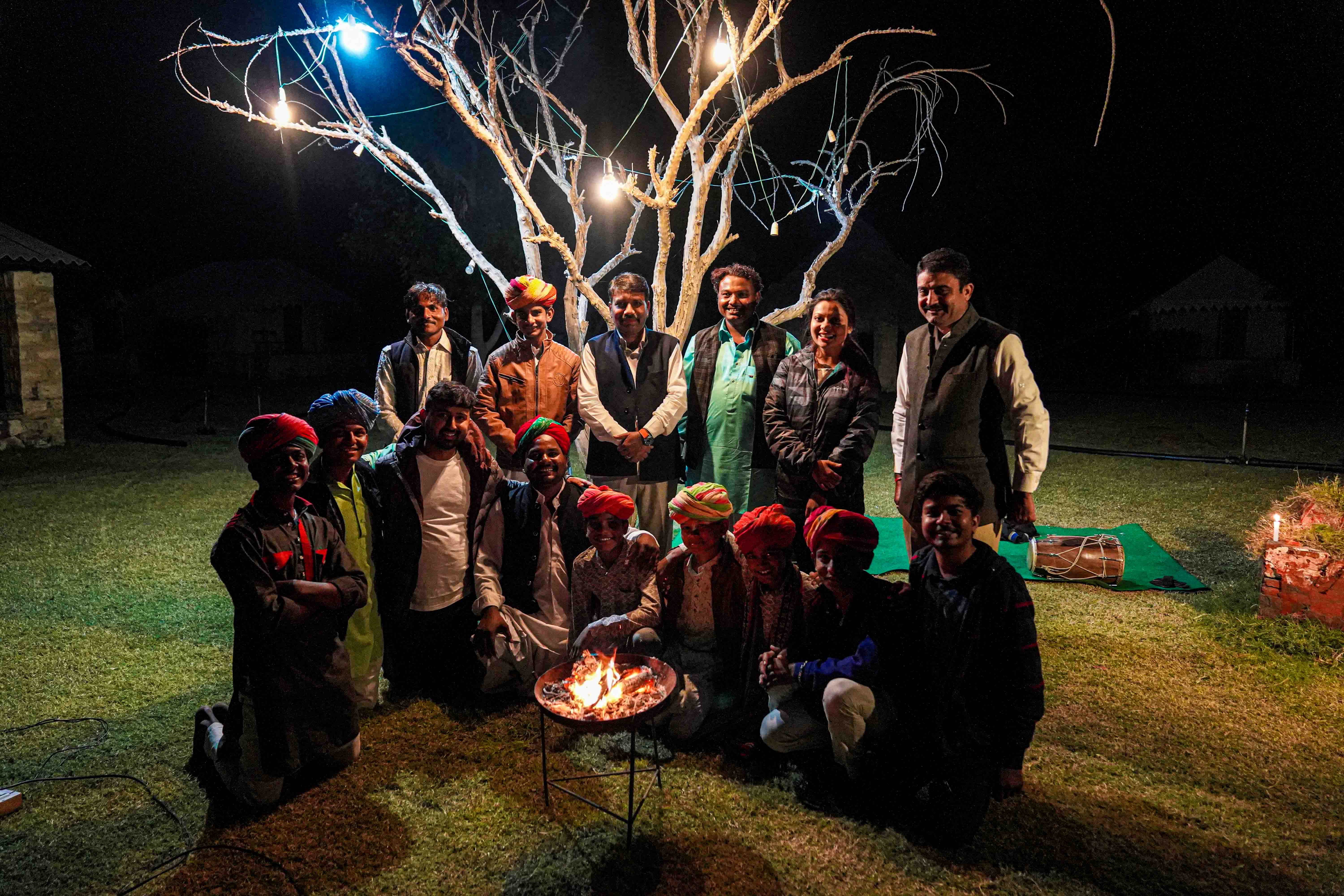
(The groom looks like a bunch of flower in the garden)
Beend raja aisa bana
Tara ke beech Chand
(He looks like the moon amongst stars)
Aiso din aaj ko
Nit nit hoe
(May the day like this occur every day)
The lyrics of this song along with many others have been written by Sabir’s ancestors and they pick up on the age-old tradition. In fact, he tells that most of these songs are never written and they are considered down upon for their own storylines and characters. Even though some of the characters taken are from the mainstream tradition but there are differences in the plots suiting to the local imaginations of the people. But it can still be considered as a heritage for its centuries of transmission and the belonging to the world of local and indigenous. In fact, the folk artists of Rajasthan are the forgotten storytellers of the rich culture and tradition of the area and the songs tell the stories of bravery, love, romance and everything happened and did not happen.
He has practised multiple traditional instruments like Dholak, Dhol, Khartal, Morchang etc. As he is still at a learning stage in his craft he still takes classes from his paternal uncle and used to play dholak with his grandfather. He has performed in almost all district within Rajasthan and metro cities such as Mumbai as well. He considers his performance in Mumbai as the most memorable one and wishes to replicate more experiences of the same kind.
Sabir Khan has set an aim to support and promote the Manganiyar culture at such a juvenile age. He aspires to do so and create more awareness as well as opportunities for the folk musicians who reside in the region through his artful display of their traditional genre of music as well as dance.
Sabir and all the members of his musical group are children who have yet to be initiated into the world of responsibilities of adult life. This gives them a substantial amount of buffer time to take advantage of their talents and make a presence for themselves in the musical sphere of the state as well as the country. Young instrumentalists like Hazur, Moti and Hanif Khan, who are quite dedicated to their art make for brilliant talents at such young ages. The vocals of Sarvar, Sohail and the leader himself have shared with each other a spectrum of knowledge in music and shall keep doing it for as long as they can.
These children idolize the elders of their villages who have passed on their musical knowledge to them. They also idolize popular folk and Sufi musicians from the state and understand the importance of their success which brings prosperity to their culture and raises awareness about it in the outside world.
But he says, “We sing songs of happiness and royalty. We do not let our pain surface our voice. It remains within us.” But he is still caught up in the shackles of poverty due to the negligence of folk music.
But then he says, “music is our refuge.”
